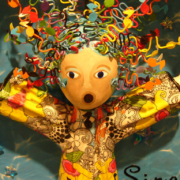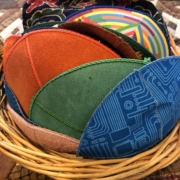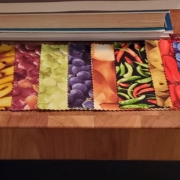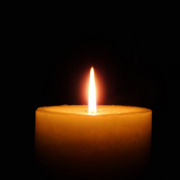What our prayer shawls carry

Right now there are 15 tallitot in my house. How did I get here?
One tallit is my son’s bar mitzvah tallit; one is the “girly” tallit I sometimes wear; one is the giant wool tallit I sometimes wrap couples in under the chuppah. The stories these tallitot tell are clear and known.
Ok, what about the other dozen? I brought these tallitot (or talesim, or tallises if you like–we can pluralize the word in Hebrew, Yiddish or English respectively) home from our synagogue for some TLC. We have newer ones at shul now, sponsored by a board member a few years back, but these older, threadbare, sad tallitot were still in rotation. After over a year of storage due to covid, it was time to take a discerning eye to these talesim.
I brought the Dirty Dozen home and promptly gave them a bath in the tub. I did not want to agitate them in a machine due to the tzitzit and decorative fringes, and my apartment building has only big commercial washers. The tallitot had a lovely spa day, with all appropriate treatments, carrying away the dirt and stale perfume and stains of all the humans who had worn them. They emerged, much better than they started…but still shabby.
As I washed the tallitot, I thought about their useful lives. What prayers had been said, by how many, wrapped in these tallitot? Prayers for healing; prayers of gratitude; perhaps a baby wrapped up at a naming ceremony is now a grown up; perhaps tears fell on the fabric and I had just washed those tears away. If only that were how it worked! Wash your tears right down the drain! Was I re-sending those prayers up with the fragrance of soap and humanity?
Well, sometimes a spa day is not enough for a full rejuvenation. I trimmed the loose threads, and neatened up each tallit as best I could. Even so, of the dozen, only one remained fit for synagogue use.
A tallis is mostly just a way to wear tzitzit, in fulfillment of the commandment (Numbers 15:38).
But a tallit should have a discernible front/back up/down. This is often accomplished by putting an atarah, a neckband, on the tallit. To beautify the commandment (a practice known as hiddur mitzvah), the atarah is often embroidered with fancy metallic thread, and might contain a name of God. So, both tzitzit and atarah should be handled with respect. My rabbi said they should go into a genizah, a sacred repository, at the end of their useful life. Many sources suggest a genizah and/or a Jewish cemetery.
A little lightbulb went off in my brain and I recalled that the Hebrew Free Burial Association was looking for tallitot for burial of indigent Jews a while back. I wrote to them, and they confirmed that they would be happy to have 11 shabby but freshly washed tallitot. So now the prayers bound up after so many years on so many shoulders will go to their rest, accompanying someone who truly needed comfort in this life.
Is it too animistic to think about the tallitot entwining and remembering the prayers they heard and felt? OK, let me have my little flight of fancy. I’ll focus on that rather than think about kneeling at the bathtub up to my elbows in dirty water.
If you are the person who is in charge of things like this at your shul, it’s time to give your tallitot (and kippot) a good looking over. And a sniff. Also, it’s time to take a peek at your own tallis. Is this the year to buy a new one? Is this the year to give one as a gift? The board member mentioned above and I have each given six new tallitot to the shul this year.
The mitzvah of wearing a tallit is not something I grew up with, but something I am growing into. Every time I touch a tallit, I can feel myself twirling my father’s tzitzit as a tiny child in shul. I like to think that maybe our tallitot do hold things in their threads, including our prayers and our memories.

Shari Salzhauer Berkowitz is an associate professor of Communication Disorders and a speech-language pathologist. She serves as a lay service leader and trustee at Temple Beth El of City Island, NY, also known as “your shul by the sea.”







